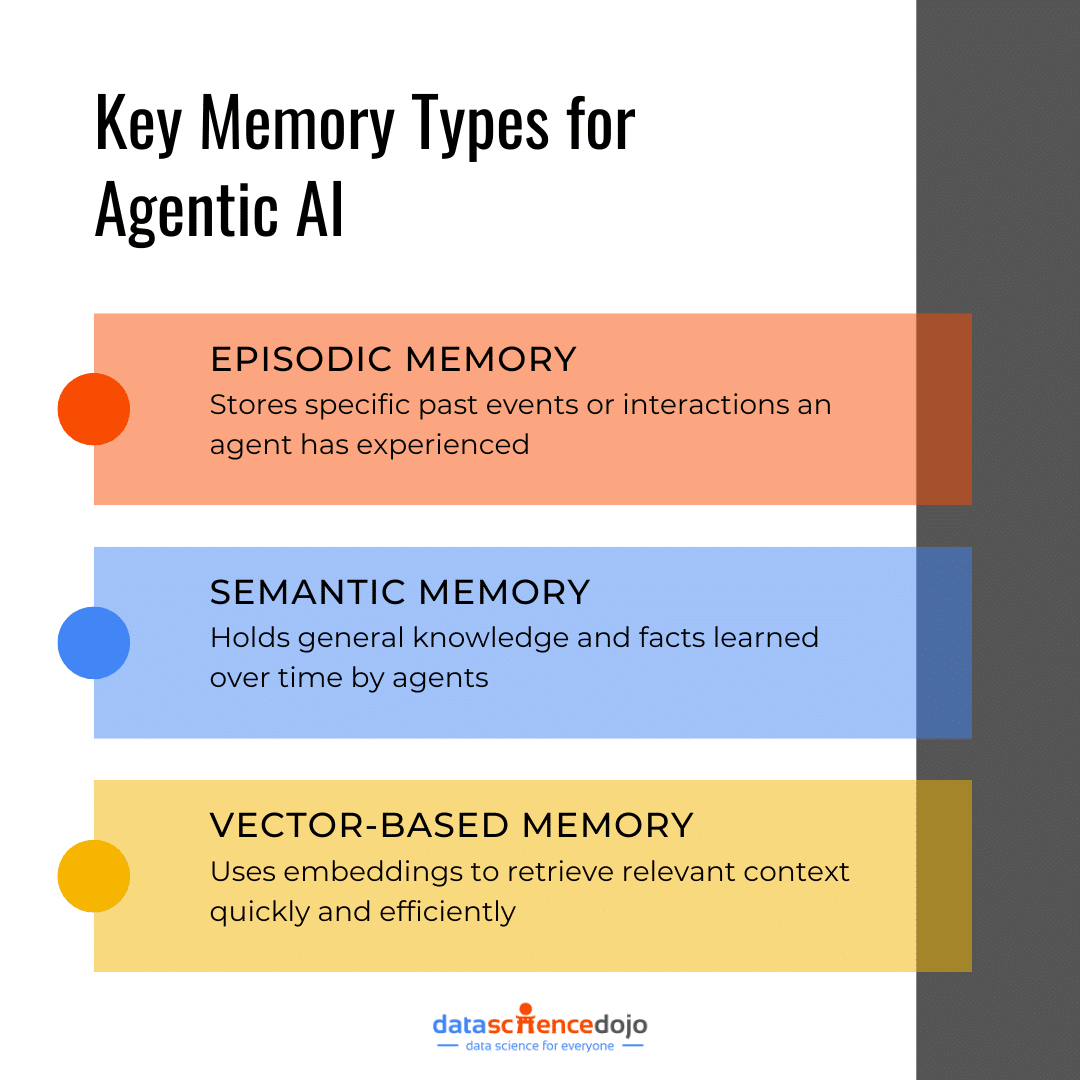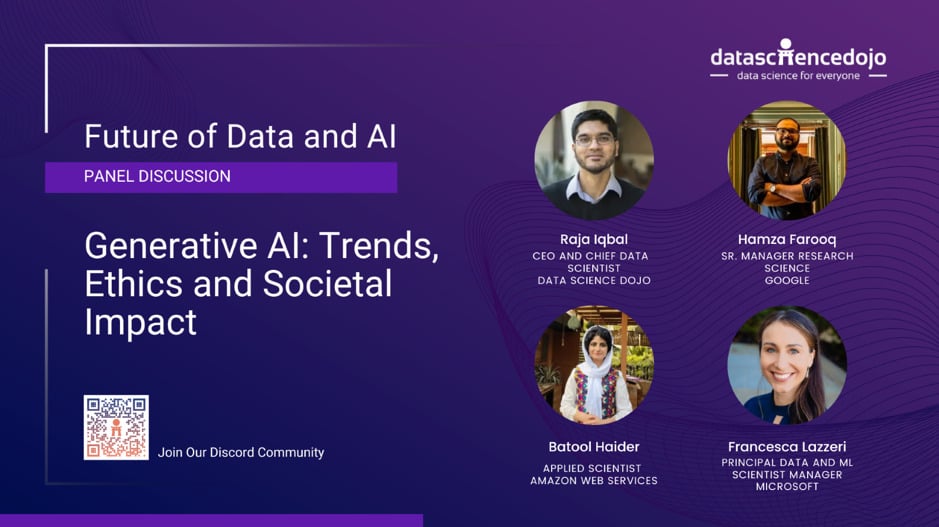Have you ever wondered what possibilities agentic AI systems will unlock as they evolve into true collaborators in work and innovation? It opens up a world where AI does not just follow instructions. It thinks, plans, remembers, and adapts – just like a human would.
With the rise of agentic AI, machines are beginning to bridge the gap between reactive tools and autonomous collaborators. That is the driving force behind the Future of Data and AI: Agentic AI Conference 2025.
This event gathers leading experts to explore the key innovations fueling this shift. From building flexible, memory-driven agents to designing trustworthy, context-aware AI systems, the conference dives deep into the foundational elements shaping the next era of intelligent technology.
In this blog, we’ll give you an inside look at the major panels, the core topics each will cover, and the groundbreaking expertise you can expect. Whether you’re just starting to explore what are AI agents or you are building the next generation of intelligent systems, these discussions will offer insights you won’t want to miss.
Ready to see how AI is evolving into something truly remarkable? Register now and be part of the conversation that’s defining the future!
Panel 1: Inside the Mind of an AI Agent
Agentic Frameworks, Planning, Memory, and Tools
Speakers: Luis Serrano, Zain Hasan, Kartik Talamadupula
This panel discussion marks the start of the conference and dives deep into the foundational components that make today’s agentic AI systems functional, powerful, and adaptable. At the heart of this discussion is a closer look at how these agents are built, from their internal architecture to how they plan, remember, and interact with tools in the real world.
1. Agentic Frameworks
We begin with architectures, the structural blueprints that define how an AI agent operates. Modern agentic frameworks like ReAct, Reflexion, and AutoGPT-inspired agents are designed with modularity in mind, enabling different parts of the agent to work independently yet cohesively.
These systems do not just respond to prompts; they evaluate, revise, and reflect on their actions, often using past experiences to guide current decisions. But to solve more complex, multi-step problems, agents need structure. That’s where hierarchical and recursive designs come into play.
Hierarchical frameworks allow agents to break down large goals into smaller, manageable tasks, similar to how a manager might assign sub-tasks to a team. Recursive models add another layer of sophistication by allowing agents to revisit and refine previous steps, making them better equipped to handle dynamic or evolving objectives.
You can learn more about what agentic AI is
2. Planning and Reasoning
Planning and reasoning are also essential capabilities in agentic AI. The panel will explore how agents leverage tools like PDDL (Planning Domain Definition Language), a symbolic planning language that helps agents define and pursue specific goals with precision.
You will also hear about chain-of-thought prompting, which guides agents to reason step-by-step before arriving at an answer. This makes their decisions more transparent and logical. Combined with tool integration, such as calling APIs, accessing code libraries, or querying databases, these techniques enhance an agent’s ability to solve real-world problems.
3. Memory
Memory is another key piece of the puzzle. Just like humans rely on short-term and long-term memory, agents need ways to store and recall information. The panel will unpack strategies like:
- episodic memory, which stores specific events or interactions
- semantic memory, that is, general knowledge
- vector-based memory, which helps retrieve relevant information quickly based on context
You will also learn how these memory systems support adaptive learning, allowing agents to grow smarter over time by refining what they store and how they use it, often compressing older data to make room for newer, more relevant insights.

Together, these components – architecture, planning, memory, and tool use – form the driving force behind today’s most advanced AI agents. This session will offer both a technical roadmap and a conceptual framework for anyone looking to understand or build intelligent systems that think, learn, and act with purpose.
Panel 2: From Recall to Context-Aware Reasoning
Architecting Retrieval Systems for Agentic AI
Speakers: Raja Iqbal, Bob Van Luijt, Jerry Liu
Intelligent behavior in both humans and AI is marked by memory playing a central role. In agentic AI, memory is more than just about storing data. It is about retrieving the right information at the right time to make informed decisions.
This panel takes you straight into the core of these memory systems, focusing on retrieval mechanisms, from static and dynamic vector stores to context-aware reasoning engines that help agents act with purpose and adaptivity.
1. Key Themes
At the center of this conversation is how agentic AI uses episodic and semantic memory.
- Episodic memory allows an agent to recall specific past interactions or events, like remembering the steps it took to complete a task last week.
- Semantic memory is more like general knowledge, helping an agent understand broader concepts or facts that it has learned over time.
These two memory types work together to help agents make smarter, more context-aware decisions. However, these strategies are only focused on storing data, while agentic systems also need to retrieve relevant memories and integrate them into their planning process.
The panel explores how this retrieval is embedded directly into an agent’s reasoning and action loops. For example, an AI agent solving a new problem might first query its vector database for similar tasks it has encountered before, then use that context to shape its strategy moving forward.
2. Real-World Insights to Understand What are AI Agents
The conversation will also dive into practical techniques for managing memory, such as pruning irrelevant or outdated information and using compression to reduce storage overhead while retaining useful patterns. These methods help agents stay efficient and scalable, especially as their experience grows.
You can also expect insights into how retrievers themselves can be fine-tuned based on agent behavior. By learning what kinds of information are most useful in different contexts, agents can evolve to retrieve smartly.
The panel will also spotlight real-world use cases of Retrieval-Augmented Generation (RAG) in agentic systems, where retrieval directly enhances the agent’s ability to generate accurate, relevant outputs across tasks and domains. Hence, this session offers a detailed look at how intelligent agents remember, reason, and act with growing sophistication.
Here’s a guide to learn about retrieval augmented generation (RAG)
Panel 3: Designing Trustworthy Agents
Observability, Guardrails, and Evaluation in Agentic Systems
Speakers: Aparna Dhinakaran, Sage Elliot
This final panel tackles one of the most pressing questions in the development of agentic AI: How can we ensure that these systems are not only powerful but also safe, transparent, and reliable? As AI agents grow more autonomous, their decisions impact real-world outcomes. Hence, trust and accountability are just as important as intelligence and adaptability.
1. Observability
The conversation begins with a deep dive into observability, that is, how we “see inside” an AI agent’s mind. Developers need visibility into how agents make decisions. Tools that trace decision paths and log internal states offer crucial insights into what the agent is thinking and why it acted a certain way.
While these insights are useful for debugging, they serve a greater purpose. They build the reliability of these agentic systems, enabling users to operate them confidently in high-stake environments.
Here’s what you need to know about LLM observability and monitoring
2. Guardrails
Next, the panel will explore behavioral guardrails for agentic AI systems. These are mechanisms that keep AI agents within safe and expected boundaries, ensuring the agents operate in a way that is ethically acceptable.
Whether it is a healthcare agent triaging patients or an enterprise chatbot handling sensitive data, agents must be able to follow rules, reject harmful instructions, and recover gracefully from mistakes. Setting these constraints up front and continuously updating them is key to responsible deployment.
3. Evaluation
However, a bunch of rules and constant monitoring is not the only solution. You need an evaluation strategy for your agentic systems to ensure their reliability and practical use. The panelists will shed light on best practices of evaluation, like:
- Simulation-based testing, where agents are placed in controlled, complex environments to see how they behave under different scenarios
- Agent-specific benchmarks, which are designed to measure how well an agent is performing beyond just accuracy or completion rates
While these are some evaluation methods, the goal is to find the answer to important questions during the process. These questions can be like: Are the agent’s decisions explainable? Does it improve with feedback? These are the kinds of deeper questions that effective evaluation must answer.
The most important part is, you will also get to learn from our experts as they share their lessons from real-world deployments. They will reflect on what it takes to scale trustworthy agentic AI systems without compromising performance.
You can also explore LLM evaluation in detail
Ranging from practical trade-offs and what works in production, to how organizations are navigating the complex balance between oversight and autonomy. For developers, product leads, and AI researchers, this session offers actionable insights into building agents that are credible, safe, and ready for the real world.
The Future of AI Is Agentic – Are You Ready?
As we move into an era where AI systems are not just tools but thinking partners, the ideas explored in these panels offer a clear signal: agentic AI is no longer a distant concept, but is already shaping how we work, innovate, and solve problems.
The topics of discussion at the Agentic AI Conference 2025 show what is possible when AI starts to think, plan, and adapt with intent. Whether you are just learning what an AI agent is or you are deep into developing the next generation of intelligent systems, this conference is your front-row seat to the future.
Don’t miss your chance to be part of this pivotal moment in AI evolution and register now to join the conversation of defining what’s next!







